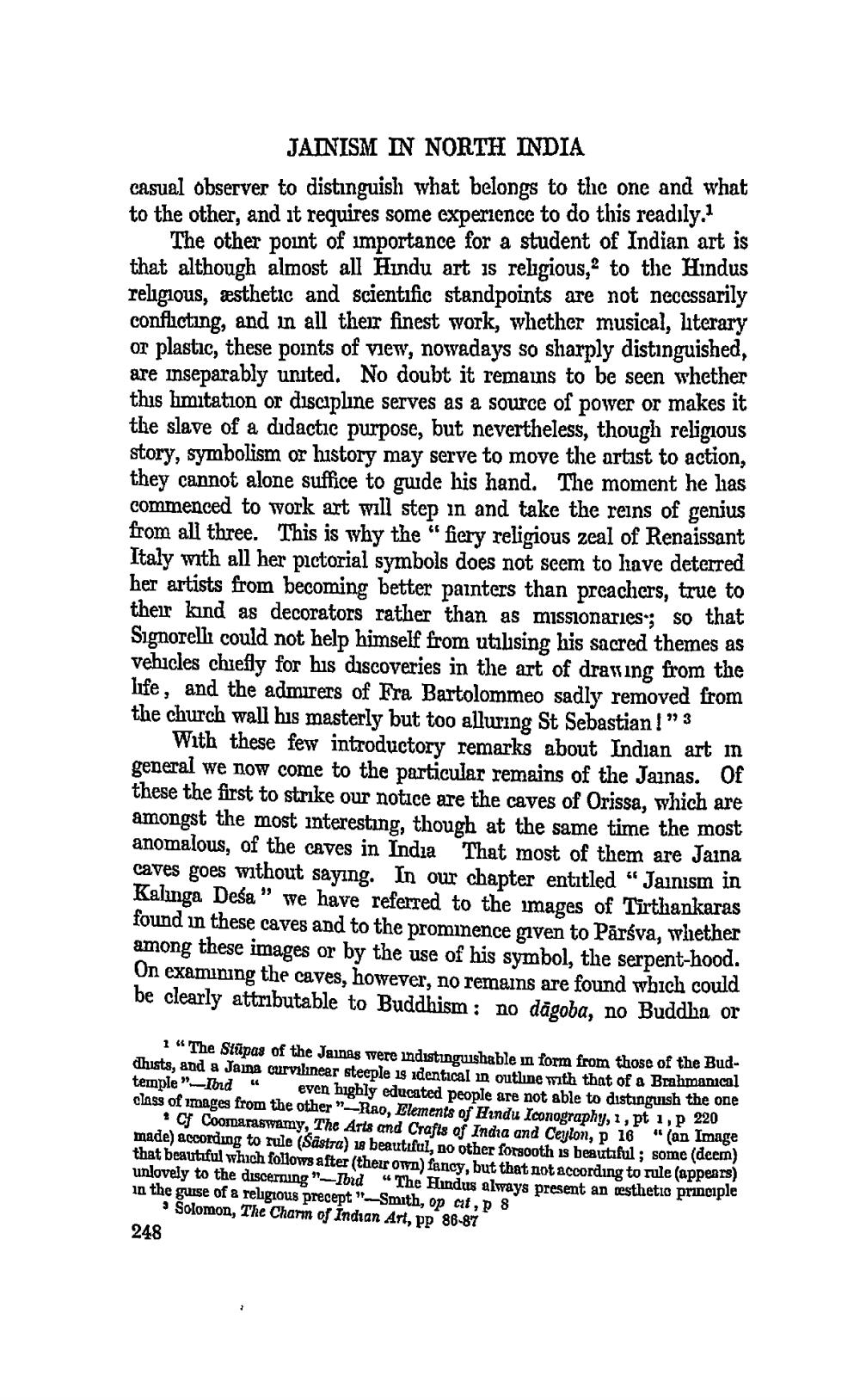________________ JAINISM IN NORTH INDIA casual observer to distinguish what belongs to the one and what to the other, and it requires some experience to do this readily,1 The other point of importance for a student of Indian art is that although almost all Hindu art is religious, to the Hindus religious, aesthetic and scientific standpoints are not necessarily conflicting, and in all their finest work, whether musical, literary or plastic, these points of view, nowadays so sharply distinguished, are inseparably united. No doubt it remains to be seen whether this hmitation or discipline serves as a source of power or makes it the slave of a didactic purpose, but nevertheless, though religious story, symbolism or history may serve to move the artist to action, they cannot alone suffice to guide his hand. The moment he has commenced to work art will step in and take the reins of genius from all three. This is why the "fiery religious zeal of Renaissant Italy with all her pictorial symbols does not seem to have deterred her artists from becoming better painters than prcachers, true to their kind as decorators rather than as missionaries; so that Signorelli could not help himself from utilising his sacred themes as vehicles chiefly for his discoveries in the art of drawing from the life, and the admirers of Fra Bartolommeo sadly removed from the church wall his masterly but too alluring St Sebastian!" 3 With these few introductory remarks about Indian art m general we now come to the particular remains of the Jainas. Of these the first to strike our notice are the caves of Orissa, which are amongst the most interesting, though at the same time the most anomalous, of the caves in India That most of them are Jaina caves goes without saying. In our chapter entitled "Jainism in Kalinga Desa" we have referred to the images of Tirthankaras found in these caves and to the prominence given to Parsva, whether among these images or by the use of his symbol, the serpent-hood. On examining the caves, however, no remains are found which could be clearly attributable to Buddhism : no dagoba, no Buddha or 1 "The Stupas of the Jainas were indistinguishable in form from those of the Buddhists, and a Jaina curvilinear steeple is identical in outline with that of a Brahmanical temple "-Ibid even highly educated people are not able to distinguish the one class of mages from the other"--Rao, Elements of Hindu Iconography, ?, pt 1, p 220 Cf Coordanaswamy, The Arts and Crafts of India and Ceylon, p 76 "(an Image made) according to rule (Sastra) 18 beautiful, no other forsooth is beautiful; some (deem) that beautiful which follows after their own fancy, but that not according to rule (appears) unlovely to the discerning"-Iord "The Hindus always present an testhetio principle in the guise of & religrous precept "-Smith, op cit, 8 * Solomon, The Charm of Indian Art, PP 86-87 248




